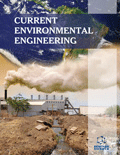Abstract
This paper explores a real-time resource tracking model and seeks to demonstrate an alternative hot-water production system that uses an air conditioner heat recovery unit and a heat exchanger with a controller system, to develop a business model within a community energy savings program (new construction and existing system retrofits). Buildings account for almost 40% of the U.S. CO2 emissions, where hot water production represents on average roughly 17% to 30% of a household’s energy consumption. Simple changes in technologies (innovation and diffusion) and economics (business models) may deter wasteful usage – such as making the system more efficient by using wasted energy or renewable sources of energy, like solar; or allow efficiency and system data to be more available for vendors of energy efficient products to interject and provide services. The current paper encompasses a “Numerically Verifiable Emissions Reduction Device” taxonomy (or NumVERD) where more renewables are integrated, as well as increasing the efficiency of an energy system. The paper hence includes feasibility considerations for an alternative hot water production system that uses the new, low-cost solar collectors using connected devices to track usage and emissions in real time for each household or business – hence it makes an economic case for the de- carbonization of power and enhancing system efficiency from an energy standpoint. The current paper relates the energy and emissions reductions phenomenon by linking the basics of thermodynamics and the economics of greenhouse gas emissions trading using low transaction cost infrastructure and ubiquitous networks, in order to objectively counter the effects of global warming – it thereby introduces a verifiable “figure of merit” for a clean energy technology system for different level of analyses using data and metrics, leading to a regional, or potentially, world-system impact scenario, through instruments such as MARKAL-based modeling. The implications for home use and economic emissions monitoring and trading are therefore succinctly discussed.
Keywords: Data and metrics, figure of merit, greenhouse gas emissions, hot-water production system, meta-energy, numerically verifiable emissions reduction device.
Graphical Abstract
 23
23

